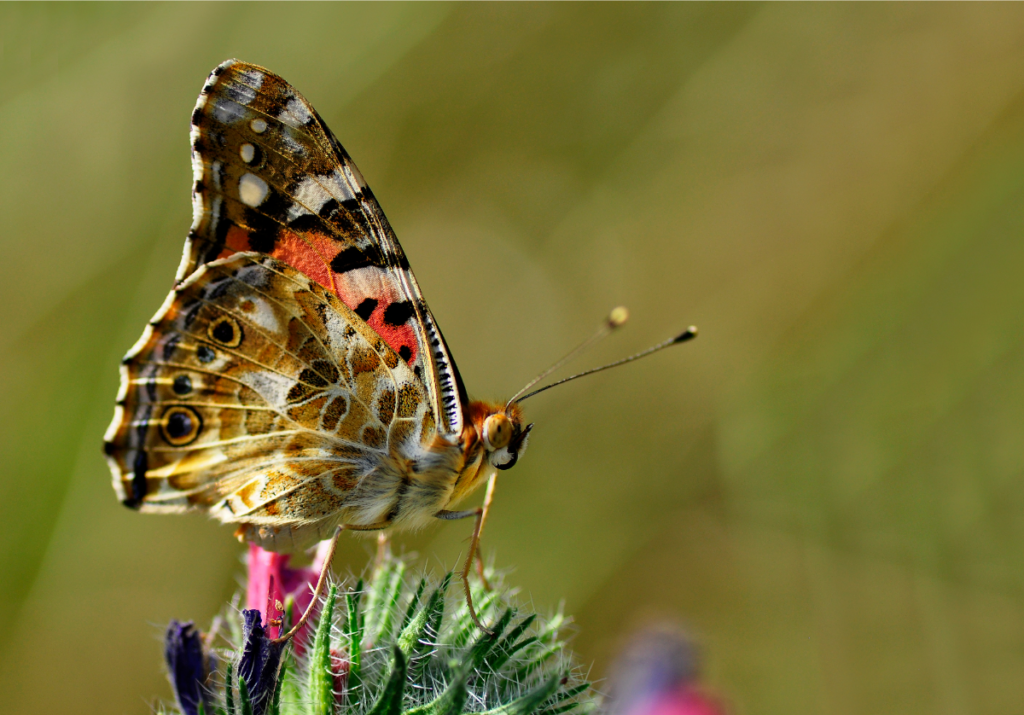Welcome back to the Lab!
It probably comes as no surprise that we highly encourage using invertebrates as teaching tools for a wide range of scientific subjects, from physiology to biomimicry. But when working with live animals, ethical questions often crop up, and when it comes to insects, the question is often, “Can we release them?”
This question in particular often relates to butterflies; butterfly rearing kits are readily available to educators, and once students have had the opportunity to watch them grow from egg to adult, setting them free only seems like the natural thing to do.
One of the most popular classroom butterflies is the painted lady butterfly, Vanessa cardui. This particular species of butterfly is easy to care for, and an excellent educational tool when students are learning about metamorphosis. But many educators and butterfly enthusiasts wonder if it is safe and/or ethical to release the adult butterflies. While painted ladies do occur naturally here, I hesitate to give a resounding “yes!” to that question.

Vanessa cardui have a worldwide distribution and are some of the most successful migrating butterflies on the planet. Their migration habits remained a mystery until recently, when it was discovered that the migrations take place at high altitudes, far from the watchful eye of butterfly observers. Once this crucial aspect of their behavior was uncovered, further secrets of their migratory patterns were revealed. European populations were found to make a 9,000 mile, inter-generational round trip from tropical Africa to Iceland.
The migratory behavior of Vanessa cardui allows the butterfly to breed continuously, meaning that there is no definitive “breeding season.” The butterflies do not show overwintering behavior, and instead migrate south during colder months; while their breeding behavior may slow (at least in North America), it never appears to come to a full stop. Female V. cardui produce large numbers of offspring in their lifetime thanks to their migratory nature and continuous breeding cycles, so unlike other migratory butterflies like the monarch (which we’ll discuss in part II), painted lady populations seem to be doing just fine.

So, should classroom-raised painted ladies be released into the wild? Given the information and the cosmopolitan nature of the species, my answer is a solid… I don’t know. The nature of my role precludes me from saying yes, but do I think releasing them will cause any harm to our local ecosystem? Probably not. My advice is this: if you want to raise V. cardui (or any insect, for that matter) in your classroom or home, use the opportunity to explain to students and children the consequences that can come with releasing captive, non-native animals into wild environments. Make sure you can care for the adult butterflies by providing them a large enough cage (this primer on painted lady care from Carolina Biological is an excellent resource). Be prepared to humanely euthanize adults by placing them in the freezer when necessary. And if you really, really want to participate in a butterfly release, then join us at our new facility when we open in 2023; there will be plenty of opportunities to do so in the butterfly garden.
Until next time, thanks for visiting the lab!
Bug Wrangler Brenna
brenna@missoulabutterflyhouse.org
Want to revisit a previous Notes from the Lab issue? Check out our archive! Do you want to request a subject for an upcoming issue? Email me at the address above and put “Notes from the Lab” in the subject line.